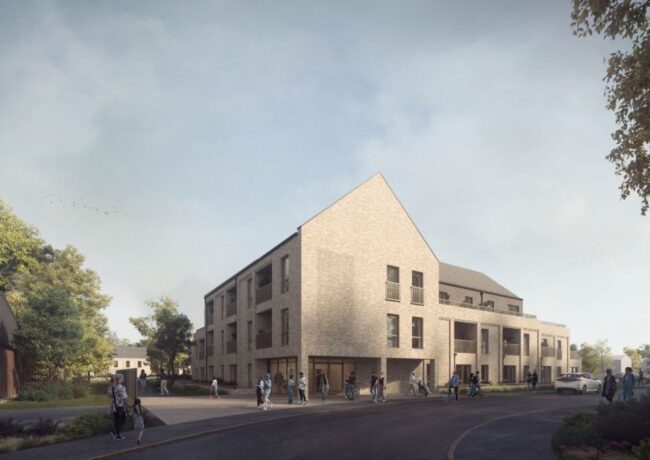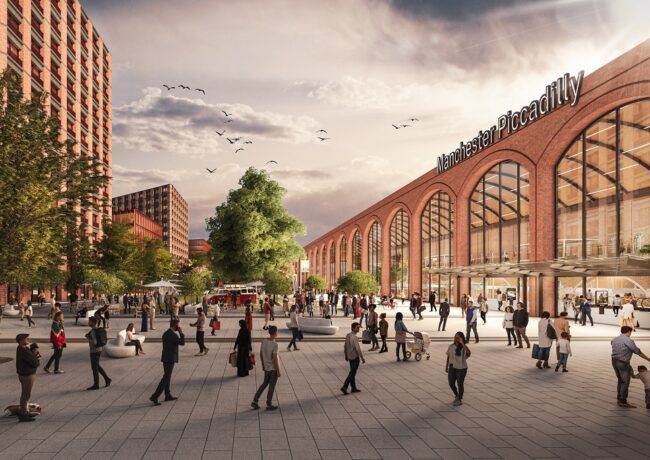GMSF moves to next phase as consultation responses published
Metro Mayor Andy Burnham has said he will refocus the planning debate on town centres and infrastructure-led development, in response to public concerns expressed in the first consultation on the Greater Manchester Spatial Framework.
More than 27,000 people responded to the initial consultation on the draft GMSF. Responses included around 17,000 letters and 18 separate petitions, as well as thousands of comments made through the GMSF consultation portal.
All responses have been published today, and are now available to view on the Greater Manchester Combined Authority website at www.greatermanchester-ca.gov.uk/gmsf
Burnham said: “We had a huge public response to the first round of consultation on the Greater Manchester Spatial Framework and we have listened carefully to what people have told us. The plan does need radical change and we will consult every step of the way as we develop the next draft that responds to those concerns. There will still be difficult decisions to be made but we will take those decisions in an open, transparent and consultative way.
“I want the new plan to refocus the debate on the transformational development opportunities for our towns, and in the coming weeks I will set out details of a new town centre challenge. Each borough will have the opportunity to nominate a town with regeneration potential. Our aim will be to kickstart the regeneration effort so we can breathe new life into our smaller towns.”
A draft of the GMSF was released last year, but plans to implement the strategy have been put on hold, as Burnham fulfils his mayoral campaign promise to radically rewrite the plan. The revised version is due out after the local elections in May next year.
According to a statement from the GMCA, both positive and negative issues were raised during the initial consultation. These included:
- Concerns about the amount of greenbelt land allocated for development. This was the single biggest issue which was raised during the consultation process.
- Others recognised the need for new housing of all types and welcomed the ambition in the plan to provide much-needed housing
- Concerns around effects on the environment and air quality
- The potential for job creation which the GMSF highlights was welcomed.
- The need to link developments to infrastructure improvements
- The types of housing and jobs being created.
The redrafted spatial framework will aim to make the most of Greater Manchester’s brownfield sites and reduce the impact on Green Belt, and have an increased emphasis on affordability.
Paul Dennett, GMCA lead for planning, housing and homelessness, said: “The Spatial Framework is our plan to provide the land for jobs and new homes that will help make Greater Manchester a global city we can be proud of and is a huge part of securing the future success of Greater Manchester.
“To do justice to the tens of thousands of responses we received as part of the initial consultation, and to demonstrate continued trust and transparency in the process, Greater Manchester leaders agreed a timetable last month with a series of steps leading up to the publication of the revised plan in June 2018. Publishing all of the consultation responses is the first step in this process.”
The next step in the GMSF process will come later in the year when the GMCA will publish data and associated sources of information such as the population and household projections produced by the Office of National Statistics, the new national methodology for calculating housing need, reviewed economic growth forecasts, transport studies and information on brownfield land.
Dennett added: “We will, of course, continue to listen to and engage with the public as the new draft of the plan is developed, as well as keeping people updated on progress. This includes meeting with interested groups in the coming months. We recognise that to make our vision a reality, the process must be shaped and informed by local people.”





I suppose this is a start. So far there has been very little effort to include anywhere other than Manchester,Salford and the posh parts of Trafford,in the Mayoral experiment. Do people in Breightmet and Fallinge matter as much as those in Mediacity and Didsbury? I doubt it,because GM is becoming Britain in miniature. With Manchester and Salford becoming the London of the conurbation and places like Bolton and Oldham, treated like the North East and South Wales are at a national level, with a few crumbs off a rich man’s table.
By Elephant
And from this new plan, focusing on “brownfield” and “regeneration”, will come inflated house prices due to inflated land, remediation and build costs. And all those ignorants with no idea who screamed “OOOOOOOOOO GREEEEEENBEELLLTTT” will be asking “why cant my little Timmy afford a house, hes 30 now!” well…the answer is clear, your children will be the victims of your collective NIMBY’ism
By QuaysMan
A generous interpretation in what Burnham is doing is sensing the danger for GM in a Manchester centric drive for economic growth and regeneration. No question, we need to make Manchester the best major city outside London to do business, but we need to look after the hinterland too, if only for the pragmatic reason that the social contract of GM will break down, and we’ll all lose – for me that’s the big insight of Brexit, Trump, AfD in Germany, that if you don’t try and drive an inclusive economic model the people on the outside pull the temple down on their own heads.
By Rich
Quaysman – conventional green belt house building has precious little to do with affordable housing. Cheap land just means more profit for landowners and volume developers. That’s the way the so called “market” works.
By Neighbourhood watch
Neighbourhood watch – The market itself largely dictates the affordability of housing in general, with “affordable housing” being a different matter altogether. I’m sure even you can see how heavily constrained, expensive sites could result in lower supply in a high demand market; forcing prices up. It’s a relatively simple concept that’s proven true in every major city in the country, even more those with significant historical constraints such as Oxford, Brisol, York etc.
By QuaysMan
@Quaysman, releasing more green belt land may prevent prices rising faster than they are but but it certainly won’t reduce them or make housing more affordable for “little Timmy” because there is no incentive for land owners or housebuilders to sell at lower prices. The market doesn’t function in that way.
A focus on brownfield land with the public sector taking the lead on remediation is a much more efficient use of public funding than subsidising sprawl and because it’s plugged into existing jobs and infrastructure is likely to deliver more housing and better quality housing overall.
By Neighbourhood watch
@Neighbourhood watch There is constant incentive for house builders to sell as long as they are making a profit, it is the high demand and low volume keeping prices up. Drastically increase supply and demand will drop accordingly as the market floods, pushing prices slowly down or at least stalling them long enough. Build costs have gone through the roof too since we were not building at a volume high enough to keep the brick kilns open and have to import everything now.
Greenfield sites shouldn’t need to be subsidized to any significant extent where as pushing brownfield sites which often have significant viability issues due to contamination is simply going to continue to push house/apartment prices up encouraging the rabbit hutch style developments we see in Manchester non-stop. Low quality, small and expensive. We have been pushing the brownfield agenda for years now, its done no good because its too costly and put simply, there’s not even enough of it for long term housing need unless you want to try and cram everyone into dinky apartments.
By QuaysMan
@quaysman You misunderstand how house builders operate. They do not build to demand, they build to efffective demand determined by land value and buyers ability to pay at that related price. Even if you release more land, no landowner will sell at a lower price because there is no competition between sellers in the land market. They will hold out for the highest value possible. Any reduction in the cost of land will in any case mean more profit for house builders since they don’t really compete with each other.
Green belt release will have practically zero impact on house prices. The only way forward is for public agencies to intervene directly in the land market and build in more sustainable town centre or locations to prevent costs being loaded into insufficient suburban infrastructure.
By Neighbourhood watch